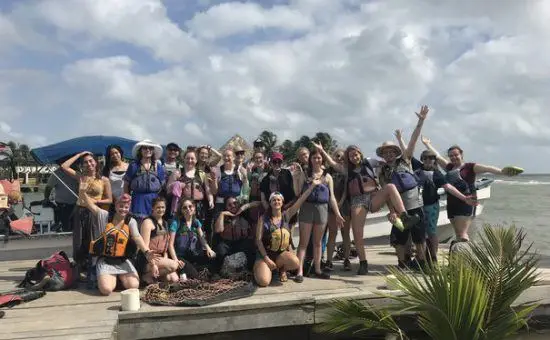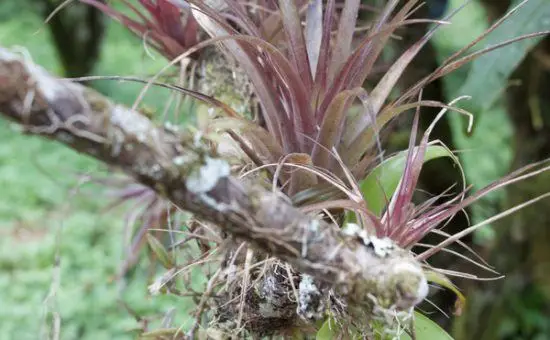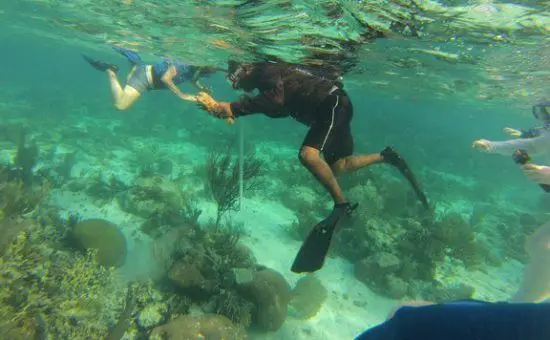The Tropics: Opportunities and Challenges
An Exploration of Human-Environment Relationships in Belize
Belize 2018
| Video by students Marine Coeurdassier and Juliette Mavrias | Video by student Dasha Feldsherova |







Our experience in Belize – by teacher Brandee Diner
The Winter 2018 semester saw the second successful completion of the complementary course “The Tropics: Opportunities and Challenges- An Exploration of Human/Environment Relationships in Belize.
Twenty-three students representing all faculties and many of the College’s programs participated in this international project, which included a 10-day field trip in Belize. This multi-disciplinary course drew on a diversity of subjects, including history, economics, sociology, tourism, natural resource sciences and geography. More specifically, students spent seven weeks learning about the people, nature, industry, history and economy of Belize, prior to embarking on a journey that complemented their theoretical knowledge with a hands-on learning experience.
The home base for our ten-day stay in Belize was the Toucan Ridge Ecology and Education Society (T.R.E.E.S), a biological research station nestled into the backdrop of the Mayan Mountains, in the Stann Creek District. The 200-acre property is dominated by a lowland broadleaf forest ecosystem and is also home to a riparian rainforest, a wetland habitat, and an organic fruit orchard. Over our first three days at T.R.E.E.S, we visited two local, organic farms; had a guided jungle walk where we learned about the medicinal and practical uses of local plants; challenged our physical and mental endurance by climbing up a flowing creek, into a waterfall; and generally acclimatized to our new surroundings, people and climate.
By day four, we were ready for a new adventure and headed away from the jungle and towards the coast. Belize contains the second biggest barrier reef in the world, and the shallow waters surrounding the mainland are littered with thousands of islands, known as Cayes. Some are big enough to contain cities and others are so small that there is only room for the mangroves that make up the island’s substrate. Billy Hawk Caye, a 1.5-acre island in the middle of the Caribbean Sea was our marine base for the following two days. It belongs to, the Sabals, a lovely Garifuna family (one of Belize’s prominent cultures) who has been managing the caye for generations, primarily as fishermen but more recently through the lens of tourism. They treated us to home cooked meals (including fried jacks and conch soup) and amazing snorkeling and kayaking adventures (day and night). We visited the neighbouring islands of Bread and Butter, as well as Carrie Bow, home to the Smithsonian marine headquarters in Belize. By the time we left the caye, everyone was sun-kissed, well fed, culturally stimulated, and much more knowledgeable about the reef’s marine life. We are completely grateful to our hosts for their warmth and hospitality!
The following three days were all about the Mayans. We stayed at the Maya Center, where our hosts, Ernesto and Aurora, treated us to an educational walk through their medicinal garden, a spiritual circle offering gratitude to nature’s elements, a cooking class where we made tortillas from scratch, and an overall sense of warmth and generosity. One of our students, who came down with a fever, even got the privilege of being worked on by Aurora’s healing hands and herbs. This stay at a modern day Mayan sanctuary was followed by a visit to Xunantunich, an ancient Mayan archeological site, located on the border of Guatemala. Our guide regaled us with tales about the inhabitants of this important Mayan settlement, which dates back to 600AD, including folklore, human sacrifices, sporting events, politics and the significance of each of the buildings.
In addition to the rich culture we experienced while staying at the Maya Center, we also spent time traipsing through the jungle at Cockscomb Basin Wildlife Sanctuary, Belize’s first jaguar reserve. A day hike brought us through the lush, tropical ecosystem to a well-deserved swim under a waterfall, while a night walk exposed us to hairy tarantulas, stinging scorpions, wide-eyed kinkajous, musical frogs, multi-colored moths, and an array of incredibly camouflaged nocturnal birds. The highlight was turning off all our flashlights and listening to the sounds of the jungle in the pitch black!
On our way back to T.R.E.E.S the following day, we visited a Garifuna museum. We deepened our understanding of the history and culture surrounding these Afro-Caribbean people, which originated with the arrival of West African slaves washing up on the shores of St. Vincent in the early 17th century. The day continued with a tour of Marie Sharp’s Hot Sauce factory, an iconic Belizean woman, and international success. She works tirelessly to assert women’s independence, as well as community involvement in her home country. The tour was an absolute inspiration, particularly when this remarkable woman greeted us at the door and warmly welcomed us to the facilities. Our final stop of the day was at a large citrus factory where we viewed the entire process from receiving shipments of oranges, all the way through to making concentrate. We were lucky to be granted access into this seemingly top-secret plant (no cameras, phones or other electronic devices), which will be closing its doors to tour groups as of this spring. It was fascinating to compare this process to the small organic farms we visited on our first day in Belize.
Our final day at T.R.E.E.S. took us to the Five Blues Lakes National Park, a 4000 acre piece of land encompassing limestone hills and containing an intricate system of caves, said to be used by the Mayans for religious ceremonies. The hike to the caves reinforced our knowledge of Belizean flora and fauna, and we were fascinated to learn about the lake, which is really a sinkhole, and actually disappeared for a period of time in 2007, the cause of which is still unknown.
After dinner we huddled around a campfire and danced the night away to the Creole rhythms of the Talla Walla Band. The smiling faces of our students were an attestation to the richness, awareness and growth experienced by all throughout our 10-day journey. The students interacted with a diversity of Belizean cultural groups, travelled through a variety of ecosystems, discovered various economic activities and lifestyles, and learned all about the threats and opportunities facing the people and places of Belize. They strengthened their ability to live communally, to share, to care, to be respectful, appreciative and graceful, as they weaved their own personalities and lifestyles into those of this amazing little tropical nation.
It is with profound gratitude that we would like to thank the entire Vanier community for their support and encouragement. We could not have made this dream a reality without it.
Attestations from Students:
“Thanks to this trip, I was enriched a lot and I see nature in a different way now” Mohamad
“It was life changing” Rachel
“Belize was more than just a trip; it was an ecological, cultural, and spiritual experience that will always have a special place in my heart” Sara
“The best way to learn about the past, present, and future of a special country. Most memorable 10 days of my life, full of knowledge, great food, and kind hearted people” Bryana
“I felt like a character from an Indiana Jones movie. The jungle was the best” Anonymous

